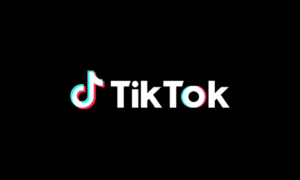As the world continues to become more digitally connected, social media platforms such as Facebook, Instagram, Twitter, and Snapchat have become an integral part of many peoples lives. While these platforms provide us with a myriad of benefits, such as the ability to connect with others and share information, they have also given rise to an increasing number of individuals who are addicted to their use. This article will provide an in-depth look at statistics provided by The Small Business Blog surrounding social media addiction.
The Prevalence of Social Media Addiction
It is important to note that social media addiction is a relatively new phenomenon and, as such, research and understanding of the issue are constantly evolving. However, estimates suggest that between 5% and 10% of social media users display signs of addiction, with younger users typically being more vulnerable. Half of teens report they feel addicted to their mobile devices, and a large number of individuals admit to using social media excessively in their daily lives.
Risks and Consequences of it
Excessive use of social media can have profound negative effects on an individuals mental, emotional, and physical health. This compulsive behavior can disrupt personal relationships, lead to feelings of isolation, and contribute to issues such as anxiety and depression. Moreover, social media addiction can result in sleep disturbances, decreased productivity, and even physical health problems such as obesity and posture issues due to extended periods of inactivity and hunched over a screen.
Identifying the Signs and Symptoms
Although social media addiction is not officially recognized as a clinical disorder, there are several signs and symptoms that can help identify individuals who may be struggling with this issue. These include spending excessive amounts of time on social platforms, feelings of unrest or anxiety when unable to check social media accounts, neglecting personal relationships and responsibilities, and using social media as a means of escapism from real-life problems.
Understanding the Causes
Social media addiction often stems from the way these platforms are designed to encourage and reward constant engagement. Many apps utilize features such as notifications which trigger dopamine release in the brain, creating a sense of pleasure and satisfaction. Additionally, the fear of missing out (FOMO) can drive individuals to incessantly check their accounts as a way of staying updated on the latest events and conversations online. Finally, social media can offer a sense of validation and connection that users may not find in other areas of their lives, further driving addictive behaviors.
Demographic Factors
Various demographic factors can increase an individuals susceptibility to social media addiction. Younger users, in particular, are more vulnerable due to their still-developing brains and lack of impulse control. Additionally, those with a history of other addictive behaviors, pre-existing mental health issues, or low self-esteem may be more likely to develop a reliance on social platforms as a means of coping with their struggles.
Interventions and Treatment Approaches for Social Media Addiction
As awareness of social media addiction grows, professionals are developing strategies for individuals to combat this issue. Some approaches include cognitive-behavioral therapy (CBT) to help users develop healthier habits and mindset, as well as support groups, such as the Social Media Addicts Association, which can provide a network of understanding and encouragement. In extreme cases, some individuals may benefit from inpatient or outpatient rehabilitation programs specializing in digital addictions.
Prevention Measures and Tips for Healthier Social Media Use
To prevent social media addiction, it is essential for users to establish boundaries and be mindful of their consumption habits. Some tips for healthier use include setting time limits for daily social media usage, turning off notifications, engaging in other rewarding and pleasurable activities beyond the digital world, and prioritizing face-to-face interactions with loved ones over virtual connections.
In conclusion
Social media addiction is a growing issue affecting a significant portion of the population. Understanding the statistics, causes, and consequences of this phenomenon is vital for both users and professionals to address and combat the problem effectively. With proactive prevention measures and appropriate interventions, individuals can enjoy the benefits of social media without falling into the pitfalls of addiction.



































